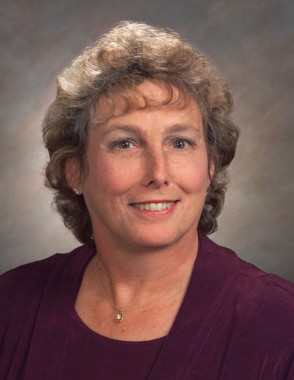User login
The overuse of tests, treatments, and procedures is getting increased attention as a patient safety issue.
The Joint Commission, along with the American Medical Association–convened Physician Consortium for Performance Improvement, recently held a summit to look at how to cut back on the overuse of certain medical interventions being performed even though they are not medically necessary and could cause harm.
The summit was centered on five common treatments and procedures:
• Percutaneous coronary intervention (PCI).
• Blood transfusions.
• Tympanostomy tubes for brief periods of fluid behind the eardrum.
• Antibiotics to treat viral upper respiratory infections.
• Early induction of labor without medical need.
"We have come to believe in American medicine that everything we do is beneficial," said Dr. Donna E. Sweet, an internist and professor of medicine at the University of Kansas, Wichita, who headed up the work group looking at antibiotic overuse for upper respiratory tract viral infections. "There’s always a downside."
Antibiotic Overuse
In the case of viral upper respiratory infections, commonly prescribed antibiotics do nothing to improve patients’ health and risk worsening the population-wide problem of antibiotic resistance. In the outpatient setting, the stumbling block is often that when patients come into the office, they expect to leave with a prescription. For physicians, it’s easier to write an antibiotic prescription than to explain why they don’t need it, Dr. Sweet said.
"American patients aren’t very patient," she said. "They want to be better now."
In the hospital, physicians have more tools at their disposal for managing the use of antibiotics, from good culture techniques, to advice from pharmacists, to an on-site laboratory. But overuse still happens. Hospitalists should try to make a specific diagnosis when they can and do a culture, Dr. Sweet said. If a patient comes into the hospital sick, febrile, hypotensive, and dehydrated, it’s probably appropriate to start them on a broad-spectrum antibiotic. But if after 24-48 hours, there’s nothing growing in the culture, it’s probably a viral infection and the antibiotics should be cut off, she said.
"Restricting both the length and then the spectrum of the antibiotic are the two things that we know will make a difference in trying to combat some of this antibiotic resistance," she said.
The antibiotic overuse work group is looking at ways to align the various definitions of a viral upper respiratory infection and the existing guidelines, Dr. Sweet said.
Transfusion Driven by Lack of Info
When it comes to blood transfusion, another work group will be considering ways to increase the amount of time spent on this topic in medical school.
"We know that there is a lack of knowledge," said Dr. Aryeh Shander, chief of the department of anesthesiology and critical care medicine at Englewood Hospital and Medical Center in New Jersey, who headed up the transfusion work group.
Medical schools devote only about 2-6 hours to the subject of blood transfusion, and most of that time is spent on blood type compatibility, not only the clinical situations in which blood transfusion is appropriate, said Dr. Shander, who is also the president of the Society for the Advancement of Blood Management, a group that advocates for reducing the number of blood transfusions.
"This is one of the 10 most common invasive procedures done in hospitalized patients," Dr. Shander said. "I don’t think you would want a cardiac surgeon doing heart surgery on you with 6 hours of education."
While it is well known that blood transfusions run the risk of complications, there is also a growing body of literature showing that transfusions don’t improve outcomes in patients who are regularly transfused, such as nonhemorrhaging patients and those who don’t have a functioning bone marrow, Dr. Shander said.
"The problem is that for physicians, the default is to transfuse," he said. "If there’s a question, they default to transfuse rather than looking at other options for patients, which are just as effective and carry less risk."
When physicians rush to transfuse, they deprive patients of better options, he said. For example, a patient with very low hemoglobin who is completely stable is likely to be transfused in many hospitals. But Dr. Shander said that patient is more likely to need iron.
Hitting Rock Bottom on PCI Overuse
When it comes to percutaneous coronary intervention, the experts at the National Overuse Summit were trying to figure out how to bring down an already low number.
Current estimates put the amount of overuse of the procedure at about 6-8% nationally, according to Dr. Carl T. Tommaso, an interventional cardiologist at NorthShore University HealthSystem in Skokie, Ill., who headed up the PCI work group.
The amount of overuse is so low because the field already has guidelines, appropriate use criteria, and a national database for reporting outcomes.
"What’s rock bottom?" Dr. Tommaso said. "We don’t know what those numbers are."
But Dr. Tommaso and the members of the PCI work group said the best path forward is to continue to push physicians to use the appropriate use criteria to guide their decisions on PCI.
"With the appropriate use criteria, and people using them, we will move toward better use of PCI for our patients," Dr. Tommaso said.
The Joint Commission and the AMA–convened Physician Consortium for Performance Improvement are currently analyzing results from the National Overuse Summit, and each of the five work groups is working on potential next steps.
The overuse of tests, treatments, and procedures is getting increased attention as a patient safety issue.
The Joint Commission, along with the American Medical Association–convened Physician Consortium for Performance Improvement, recently held a summit to look at how to cut back on the overuse of certain medical interventions being performed even though they are not medically necessary and could cause harm.
The summit was centered on five common treatments and procedures:
• Percutaneous coronary intervention (PCI).
• Blood transfusions.
• Tympanostomy tubes for brief periods of fluid behind the eardrum.
• Antibiotics to treat viral upper respiratory infections.
• Early induction of labor without medical need.
"We have come to believe in American medicine that everything we do is beneficial," said Dr. Donna E. Sweet, an internist and professor of medicine at the University of Kansas, Wichita, who headed up the work group looking at antibiotic overuse for upper respiratory tract viral infections. "There’s always a downside."
Antibiotic Overuse
In the case of viral upper respiratory infections, commonly prescribed antibiotics do nothing to improve patients’ health and risk worsening the population-wide problem of antibiotic resistance. In the outpatient setting, the stumbling block is often that when patients come into the office, they expect to leave with a prescription. For physicians, it’s easier to write an antibiotic prescription than to explain why they don’t need it, Dr. Sweet said.
"American patients aren’t very patient," she said. "They want to be better now."
In the hospital, physicians have more tools at their disposal for managing the use of antibiotics, from good culture techniques, to advice from pharmacists, to an on-site laboratory. But overuse still happens. Hospitalists should try to make a specific diagnosis when they can and do a culture, Dr. Sweet said. If a patient comes into the hospital sick, febrile, hypotensive, and dehydrated, it’s probably appropriate to start them on a broad-spectrum antibiotic. But if after 24-48 hours, there’s nothing growing in the culture, it’s probably a viral infection and the antibiotics should be cut off, she said.
"Restricting both the length and then the spectrum of the antibiotic are the two things that we know will make a difference in trying to combat some of this antibiotic resistance," she said.
The antibiotic overuse work group is looking at ways to align the various definitions of a viral upper respiratory infection and the existing guidelines, Dr. Sweet said.
Transfusion Driven by Lack of Info
When it comes to blood transfusion, another work group will be considering ways to increase the amount of time spent on this topic in medical school.
"We know that there is a lack of knowledge," said Dr. Aryeh Shander, chief of the department of anesthesiology and critical care medicine at Englewood Hospital and Medical Center in New Jersey, who headed up the transfusion work group.
Medical schools devote only about 2-6 hours to the subject of blood transfusion, and most of that time is spent on blood type compatibility, not only the clinical situations in which blood transfusion is appropriate, said Dr. Shander, who is also the president of the Society for the Advancement of Blood Management, a group that advocates for reducing the number of blood transfusions.
"This is one of the 10 most common invasive procedures done in hospitalized patients," Dr. Shander said. "I don’t think you would want a cardiac surgeon doing heart surgery on you with 6 hours of education."
While it is well known that blood transfusions run the risk of complications, there is also a growing body of literature showing that transfusions don’t improve outcomes in patients who are regularly transfused, such as nonhemorrhaging patients and those who don’t have a functioning bone marrow, Dr. Shander said.
"The problem is that for physicians, the default is to transfuse," he said. "If there’s a question, they default to transfuse rather than looking at other options for patients, which are just as effective and carry less risk."
When physicians rush to transfuse, they deprive patients of better options, he said. For example, a patient with very low hemoglobin who is completely stable is likely to be transfused in many hospitals. But Dr. Shander said that patient is more likely to need iron.
Hitting Rock Bottom on PCI Overuse
When it comes to percutaneous coronary intervention, the experts at the National Overuse Summit were trying to figure out how to bring down an already low number.
Current estimates put the amount of overuse of the procedure at about 6-8% nationally, according to Dr. Carl T. Tommaso, an interventional cardiologist at NorthShore University HealthSystem in Skokie, Ill., who headed up the PCI work group.
The amount of overuse is so low because the field already has guidelines, appropriate use criteria, and a national database for reporting outcomes.
"What’s rock bottom?" Dr. Tommaso said. "We don’t know what those numbers are."
But Dr. Tommaso and the members of the PCI work group said the best path forward is to continue to push physicians to use the appropriate use criteria to guide their decisions on PCI.
"With the appropriate use criteria, and people using them, we will move toward better use of PCI for our patients," Dr. Tommaso said.
The Joint Commission and the AMA–convened Physician Consortium for Performance Improvement are currently analyzing results from the National Overuse Summit, and each of the five work groups is working on potential next steps.
The overuse of tests, treatments, and procedures is getting increased attention as a patient safety issue.
The Joint Commission, along with the American Medical Association–convened Physician Consortium for Performance Improvement, recently held a summit to look at how to cut back on the overuse of certain medical interventions being performed even though they are not medically necessary and could cause harm.
The summit was centered on five common treatments and procedures:
• Percutaneous coronary intervention (PCI).
• Blood transfusions.
• Tympanostomy tubes for brief periods of fluid behind the eardrum.
• Antibiotics to treat viral upper respiratory infections.
• Early induction of labor without medical need.
"We have come to believe in American medicine that everything we do is beneficial," said Dr. Donna E. Sweet, an internist and professor of medicine at the University of Kansas, Wichita, who headed up the work group looking at antibiotic overuse for upper respiratory tract viral infections. "There’s always a downside."
Antibiotic Overuse
In the case of viral upper respiratory infections, commonly prescribed antibiotics do nothing to improve patients’ health and risk worsening the population-wide problem of antibiotic resistance. In the outpatient setting, the stumbling block is often that when patients come into the office, they expect to leave with a prescription. For physicians, it’s easier to write an antibiotic prescription than to explain why they don’t need it, Dr. Sweet said.
"American patients aren’t very patient," she said. "They want to be better now."
In the hospital, physicians have more tools at their disposal for managing the use of antibiotics, from good culture techniques, to advice from pharmacists, to an on-site laboratory. But overuse still happens. Hospitalists should try to make a specific diagnosis when they can and do a culture, Dr. Sweet said. If a patient comes into the hospital sick, febrile, hypotensive, and dehydrated, it’s probably appropriate to start them on a broad-spectrum antibiotic. But if after 24-48 hours, there’s nothing growing in the culture, it’s probably a viral infection and the antibiotics should be cut off, she said.
"Restricting both the length and then the spectrum of the antibiotic are the two things that we know will make a difference in trying to combat some of this antibiotic resistance," she said.
The antibiotic overuse work group is looking at ways to align the various definitions of a viral upper respiratory infection and the existing guidelines, Dr. Sweet said.
Transfusion Driven by Lack of Info
When it comes to blood transfusion, another work group will be considering ways to increase the amount of time spent on this topic in medical school.
"We know that there is a lack of knowledge," said Dr. Aryeh Shander, chief of the department of anesthesiology and critical care medicine at Englewood Hospital and Medical Center in New Jersey, who headed up the transfusion work group.
Medical schools devote only about 2-6 hours to the subject of blood transfusion, and most of that time is spent on blood type compatibility, not only the clinical situations in which blood transfusion is appropriate, said Dr. Shander, who is also the president of the Society for the Advancement of Blood Management, a group that advocates for reducing the number of blood transfusions.
"This is one of the 10 most common invasive procedures done in hospitalized patients," Dr. Shander said. "I don’t think you would want a cardiac surgeon doing heart surgery on you with 6 hours of education."
While it is well known that blood transfusions run the risk of complications, there is also a growing body of literature showing that transfusions don’t improve outcomes in patients who are regularly transfused, such as nonhemorrhaging patients and those who don’t have a functioning bone marrow, Dr. Shander said.
"The problem is that for physicians, the default is to transfuse," he said. "If there’s a question, they default to transfuse rather than looking at other options for patients, which are just as effective and carry less risk."
When physicians rush to transfuse, they deprive patients of better options, he said. For example, a patient with very low hemoglobin who is completely stable is likely to be transfused in many hospitals. But Dr. Shander said that patient is more likely to need iron.
Hitting Rock Bottom on PCI Overuse
When it comes to percutaneous coronary intervention, the experts at the National Overuse Summit were trying to figure out how to bring down an already low number.
Current estimates put the amount of overuse of the procedure at about 6-8% nationally, according to Dr. Carl T. Tommaso, an interventional cardiologist at NorthShore University HealthSystem in Skokie, Ill., who headed up the PCI work group.
The amount of overuse is so low because the field already has guidelines, appropriate use criteria, and a national database for reporting outcomes.
"What’s rock bottom?" Dr. Tommaso said. "We don’t know what those numbers are."
But Dr. Tommaso and the members of the PCI work group said the best path forward is to continue to push physicians to use the appropriate use criteria to guide their decisions on PCI.
"With the appropriate use criteria, and people using them, we will move toward better use of PCI for our patients," Dr. Tommaso said.
The Joint Commission and the AMA–convened Physician Consortium for Performance Improvement are currently analyzing results from the National Overuse Summit, and each of the five work groups is working on potential next steps.



